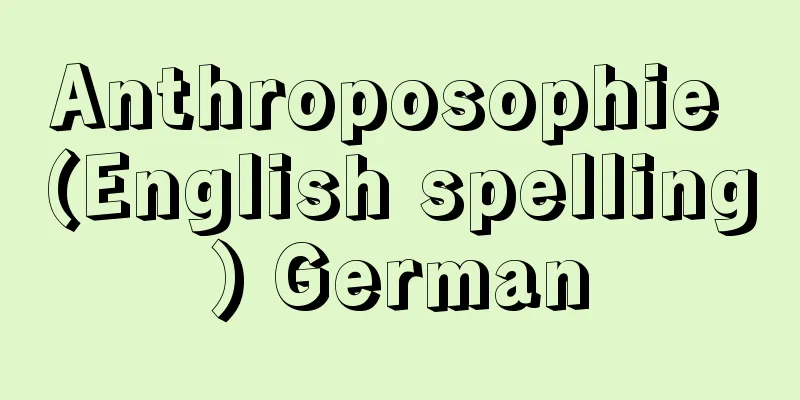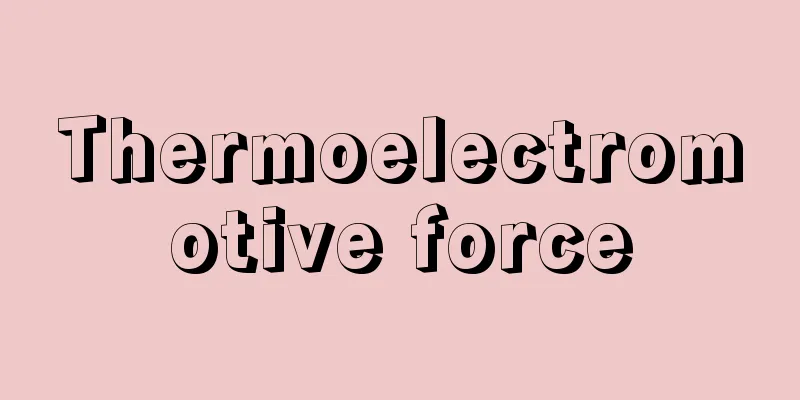Kijima Hajime

|
Poet, novelist, and American literature scholar. Born in Kyoto. Real name Kojima Shozo. Graduated from the Department of English Literature at the University of Tokyo in 1951. After working as a teacher at Tokyo Metropolitan University High School, he became a professor at Hosei University (retired in 1991). He was a member of the younger generation of poets who were based in the poetry magazine Retto. He also joined Modern Poetry with Hasegawa Ryusei and others, and closely observed the realities of society after the Second World War, had a keen sense of method, and maintained an anti-authority stance. His poetry collections include Kojima Hajime Poetry Collection (1953), Pagoda no Asa (Morning of the Pagoda) (1977), Kaifuka: Escape (1981), Souhi no Uta (Song of the Twin Flight) (1984), Yusei Hitotsu (One Planet) (1990), Asa no Habaki (Flapping Wings) (1995), and Ryumon no Migiwa de (On the Shore of the Flowing Ripples) (1999). Since the 1990s, he has been particularly active in quatrains, and has published works such as Wasetamago: A Collection of 123 Quatrain Poems (1994), Roots View: A Collection of Poems: Thirteen Series of Quatrain Poems, and Crossing Borders: A Long Quatrain Tale: A Linked 40 Pieces (both in 1999). His poetry and art collections are also unique. His short story collections include Jumping Things, Creeping Things (1969) and Letters to the First President of the Republic of Japan (1975), essay and critique collections include Poetry, Black People, Jazz (1965, 1972), Japan in the Japanese Language (1980), Trees of Birds (1989), and My Scale (2002), and novels such as Tokayamichire (Companions Anyway) (1988). His fairy tales include Think, Tanta! (1960), Our Pegasus (1966), and The Three Dragons (1971). He was also well known for his translations and introductions of African-American literature and jazz works by L. Hughes, L. Jones (Amiri Baraka), and Nat Hentoff (1925-2017). In particular, he introduced a wide range of works by Hughes, from his autobiography to collections of essays and poetry. [Yoshiori Takahashi] "Think, Tanta! (1960, Rironsha)" ▽ "Poetry, Black People, Jazz, Part 1 and 2 (1965, 72, Shobunsha)" ▽ "Our Pegasus" (1966, Rironsha) ▽ "Three Dragons" (1971, Taihei Shuppansha) ▽ "Poetry Collection: My Searchlight" (1971, Shichosha) ▽ "Modern Poetry Library 53: Kijima Hajime Poetry Collection" (1972, Shichosha) ▽ "Morning at the Pagoda: Kijima Hajime Poetry Collection" (1977, Seidosha) ▽ "Japan in the Japanese Language" (1980, Shobunsha) ▽ "Kaifūka: Escape: Kijima Hajime Poetry Collection" (1981, Doyo Bijutsusha) ▽ "Poetry Collection: Song of the Double Flight" (1984, Seidosha) ▽ "Anyway, a Companion" (1988, Seidosha) ▽ "A Tree of Birds: A Collection of Kijima Hajime Essays" (1989, Sojusha) ▽ "Poetry Collection: One Planet" (1990, Chikumashobo) ▽ "Worn Eggs: A Collection of 123 Quaternary Poems" (1994, Chikumashobo) ▽ "Morning Wings: A Collection of Kijima Hajime Poems" (1995, Kadoshobo) ▽ "Yatara Uta: A Collection of Kijima Hajime Poems" (1995, Kadoshobo) ▽ "Roots' View: A Collection of Poems: Thirteen Collections of Quaternary Poems in the Form of a Series", "Poetry Collection: On the Shore of Flowing Ripples", "Crossing Borders: A Long Quaternary Tale: Connected in 40 Pieces" (1999, Doyo Bijutsusha Publishing Co., Ltd.) ▽ "New Kijima Hajime Poetry Collection" (2000, Doyo Bijutsusha Publishing Co., Ltd.) "My Measure: A Collection of Essays by Kijima Hajime" (2002, Todosha, Maruzen)" ▽ "The Book of Jazz, by Langston Hughes, translated by Kijima Hajime (1968, Shobunsha)" ▽ "The Collected Poems of Langston Hughes, by Langston Hughes, translated by Kijima Hajime, new edition (1969, Shichosha)" ▽ "The Autobiography of Langston Hughes, vols. 1-3, by Langston Hughes, translated by Kijima Hajime (1972-1973, Kawade Shobo Shinsha)" ▽ "Collection of Essays on Langston Hughes: The Position of Black Artists, by Langston Hughes, edited and translated by Kijima Hajime (1977, Sojusha)" ▽ "Black Music, by Leroi Jones, translated by Kijima Hajime (1969, Shobunsha)" ▽ "The Autobiography of Nat Hentoff, by Nat Hentoff, translated by Kijima Hajime (1989, Shobunsha)" ▽ "Jazz Country" by Nat Hentoff, translated by Kijima Hajime (Kodansha Bunko)" ▽ "Tanikawa Shuntaro's Collected Conversations 2" (1989, Togasha)" ▽ "Hashimoto Fukuo's Collected Works 2: Black Literature Theory" (1989, Hayakawa Publishing)" ▽ "Enticed by Poetry 2" by Mizuuchi Kikuo (1995, Ayumi Publishing) [References] | | |Source: Shogakukan Encyclopedia Nipponica About Encyclopedia Nipponica Information | Legend |
|
詩人、小説家、アメリカ文学者。京都生まれ。本名小島昭三(しょうぞう)。1951年、東京大学英文科卒業。東京都立大学附属高校教諭を経て、法政大学教授(1991年退職)。詩誌『列島』に拠(よ)った若い世代の同人。長谷川龍生(はせがわりゅうせい)らと『現代詩』にも加わり、第二次世界大戦後の現実社会を凝視し、方法意識は鋭く、反権力の立場を保った。詩集に『木島始詩集』(1953)、『パゴダの朝』(1977)、『回風歌・脱出』(1981)、『双飛のうた』(1984)、『遊星ひとつ』(1990)、『朝の羽ばたき』(1995)、『流紋(りゅうもん)の汀(みぎわ)で』(1999)など。1990年代以降は、とくに四行詩に積極的で、『われたまご 一二三篇(ぺん)の四行詩集』(1994)、『根の展望 詩集:連作体四行詩十三集』『越境 長い四行詩話:四〇篇に聯弾(れんだん)する』(ともに1999)などを著した。詩画集もユニーク。短編集に『跳ぶもの匍(は)うもの』(1969)、『日本共和国初代大統領への手紙』(1975)など、エッセイ・評論集に『詩 黒人 ジャズ』正続(1965、1972)、『日本語のなかの日本』(1980)、『群鳥の木』(1989)、『ぼくの尺度』(2002)、小説に『ともかく道づれ』(1988)など。童話に『考えろ丹太!』(1960)、『ぼくらのペガサス』(1966)、『三人とんま』(1971)などがある。またL・ヒューズやL・ジョーンズ(アミリ・バラカ)、ナット・ヘントフNat Hentoff(1925―2017)などのアメリカ黒人文学やジャズ関係の翻訳、紹介には定評があった。とくにヒューズについては、彼の自伝から評論集、詩集まで幅広く紹介した。 [高橋世織] 『『考えろ丹太!』(1960・理論社)』▽『『詩・黒人・ジャズ』正続(1965、72・晶文社)』▽『『ぼくらのペガサス』(1966・理論社)』▽『『三人とんま』(1971・太平出版社)』▽『『詩集 私の探照灯』(1971・思潮社)』▽『『現代詩文庫53 木島始詩集』(1972・思潮社)』▽『『パゴダの朝 木島始詩集』(1977・青土社)』▽『『日本語のなかの日本』(1980・晶文社)』▽『『回風歌・脱出 木島始詩集』(1981・土曜美術社)』▽『『詩集 双飛のうた』(1984・青土社)』▽『『ともかく道づれ』(1988・青土社)』▽『『群鳥の木 木島始エッセイ集』(1989・創樹社)』▽『『詩集 遊星ひとつ』(1990・筑摩書房)』▽『『われたまご 一二三篇の四行詩集』(1994・筑摩書房)』▽『『朝の羽ばたき 木島始詩集』(1995・かど書房)』▽『『やたらうた 木島始詩集』(1995・かど書房)』▽『『根の展望 詩集:連作体四行詩十三集』『詩集 流紋の汀で』『越境 長い四行詩話:四〇篇に聯弾する』(1999・土曜美術社出版販売)』▽『『新木島始詩集』(2000・土曜美術社出版販売)』▽『『ぼくの尺度 木島始エッセイ集』(2002・透土社、丸善発売)』▽『ラングストン・ヒューズ著、木島始訳『ジャズの本』(1968・晶文社)』▽『ラングストン・ヒューズ著、木島始訳『ラングストン・ヒューズ詩集』新装版(1969・思潮社)』▽『ラングストン・ヒューズ著、木島始訳『ラングストン・ヒューズ自伝』1~3(1972~1973・河出書房新社)』▽『ラングストン・ヒューズ著、木島始編訳『ラングストン・ヒューズ評論集 黒人芸術家の立場』(1977・創樹社)』▽『リロイ・ジョーンズ著、木島始訳『ブラック・ミュージック』(1969・晶文社)』▽『ナット・ヘントフ著、木島始訳『ナット・ヘントフ自伝』(1989・晶文社)』▽『ナット・ヘントフ著、木島始訳『ジャズ・カントリー』(講談社文庫)』▽『谷川俊太郎著『谷川俊太郎対談集2』(1989・冬芽社)』▽『橋本福夫著『橋本福夫著作集2 黒人文学論』(1989・早川書房)』▽『水内喜久雄著『詩にさそわれて2』(1995・あゆみ出版)』 [参照項目] | | |出典 小学館 日本大百科全書(ニッポニカ)日本大百科全書(ニッポニカ)について 情報 | 凡例 |
<<: "Biographies of the Loyal Samurai"
Recommend
Harpy Eagle - Harpy Eagle
…Of the birds in the family Accipitridae, the sma...
Nalayira-divya-prabandham (English spelling)
…At its peak in the 7th and 8th centuries, a grea...
Star-nosed mole
It is an animal of the family Tallidae in the ord...
Isapa Culture
A Mesoamerican preclassic culture that spread fro...
Ubuishi - Ubuishi
…The tray is topped with pebbles brought from the...
Juban (undergarment) - Juban
Undergarments for traditional Japanese clothing. T...
Australian pitcher plant
A perennial carnivorous plant of one genus and one...
Belt fittings - Obikanag
A decorative metal fitting made of gold, silver, ...
Department of Scientific and Industrial Research
…This laboratory was modeled on the German PTR, b...
Espata danza - Espata danza
...There are many other folk songs with beautiful...
Lorsch Abbey - Kloster Lorsch
A medieval royal monastery remains in the town of ...
Imagawa Ryoshun
He was a military commander during the Nanboku-ch...
Ekoukada - Ekoukada
...Even in the rare cases where they are performe...
Amehata Inkstone
These high-quality inkstones are produced in Fujik...
Tarantula nebula (English spelling)
…Both galaxies have an abundance of gas, and new ...









